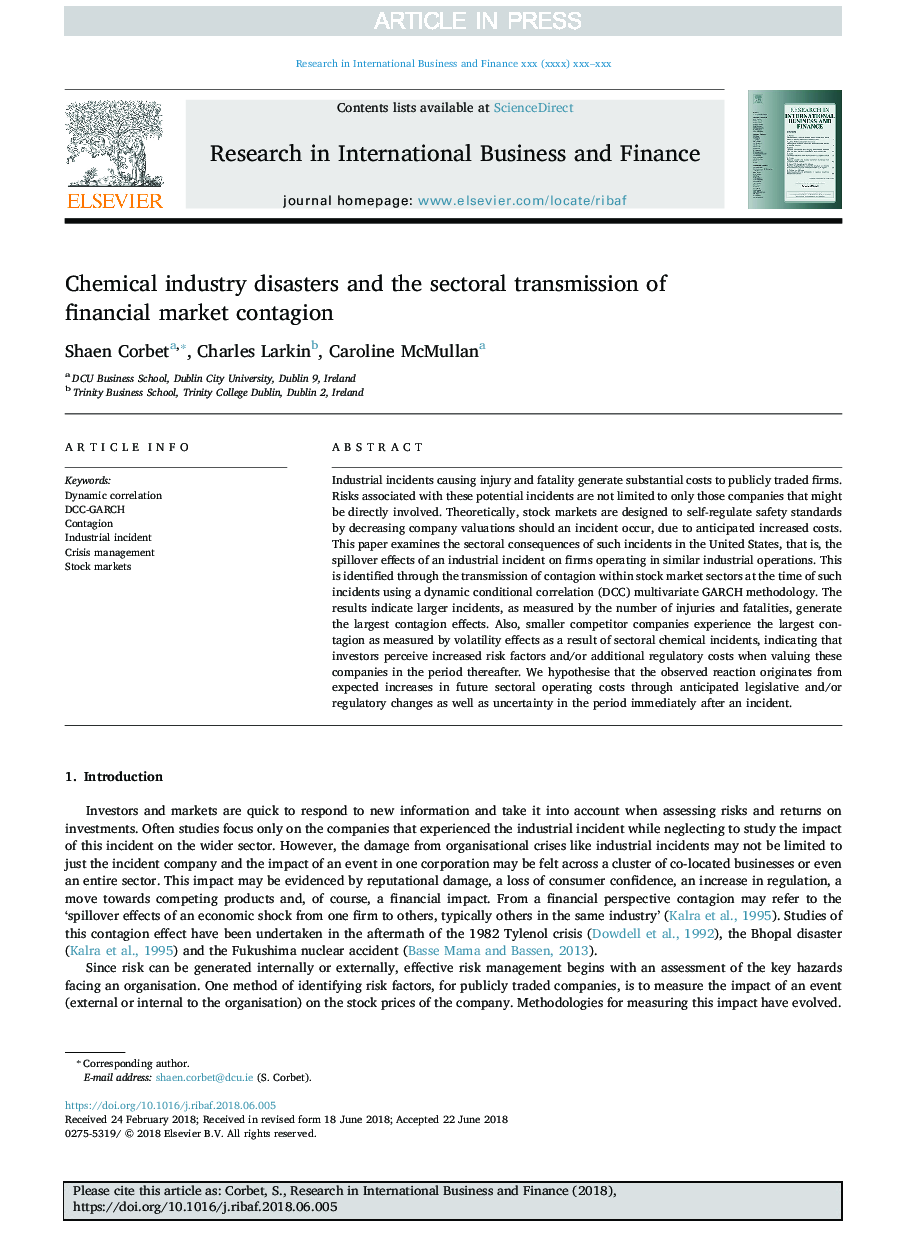| Article ID | Journal | Published Year | Pages | File Type |
|---|---|---|---|---|
| 10226900 | Research in International Business and Finance | 2018 | 12 Pages |
Abstract
Industrial incidents causing injury and fatality generate substantial costs to publicly traded firms. Risks associated with these potential incidents are not limited to only those companies that might be directly involved. Theoretically, stock markets are designed to self-regulate safety standards by decreasing company valuations should an incident occur, due to anticipated increased costs. This paper examines the sectoral consequences of such incidents in the United States, that is, the spillover effects of an industrial incident on firms operating in similar industrial operations. This is identified through the transmission of contagion within stock market sectors at the time of such incidents using a dynamic conditional correlation (DCC) multivariate GARCH methodology. The results indicate larger incidents, as measured by the number of injuries and fatalities, generate the largest contagion effects. Also, smaller competitor companies experience the largest contagion as measured by volatility effects as a result of sectoral chemical incidents, indicating that investors perceive increased risk factors and/or additional regulatory costs when valuing these companies in the period thereafter. We hypothesise that the observed reaction originates from expected increases in future sectoral operating costs through anticipated legislative and/or regulatory changes as well as uncertainty in the period immediately after an incident.
Related Topics
Social Sciences and Humanities
Business, Management and Accounting
Business and International Management
Authors
Shaen Corbet, Charles Larkin, Caroline McMullan,
